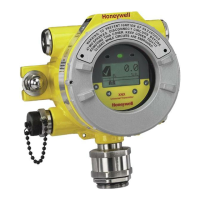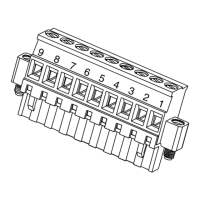Honeywell Process Solutions Wireless Dual Analog Input Interface Transmitter
Rev. 8 User Manual 13
July 2012
3.3: Electrical Installation
In this section wiring instructions are discussed for the various setup capa-
bilities of the Dual Analog Input Transmitter. The subsections are as fol-
lows:
3.3.1: Electrical Specifications
3.3.2: Wiring the Voltage/Current Input
3.3.3: Wiring the Input Switches
Caution
Remember to turn off all power BEFORE hook-
ing up any wires!
! !
3.3.1: Electrical Specifications
Analog Input Characteristics
• 10 Ohm impedance (WI551)
• 100 kOhm impedance (WI552)
Input Switch Characteristics
• For simple device monitoring only (i.e., contact closures)
Intrinsic Safety Entity Parameters for Analog Inputs
• Vmax = 30VDC
• Imax = 100mA
• Pmax = 900mW
Explosions may result in death or serious injury.
Do not remove the instrument cover or open wir-
ing housing in explosive atmospheres when power
and communications are on.
Warning
! !
Figure 3.7: Voltage/Current Input Wiring Diagram
To properly wire a device to the Dual Analog Input Transmitter follow the
wiring diagram provided below. Please note that a 0-10V loop CANNOT
be wired to a WI551 unit, and a 4-20mA loop CANNOT be wired to a
WI552 unit.
The diagram shown in Figure 3.7 below refers to the circuit board found at
the base of the Transmitter, within the junction box. Before connecting
wires to the terminal blocks, the input wires should be routed into the back
of the enclosure and threaded through the center of the circuit board.
3.3.2: Wiring the Voltage/Current
Input
Caution
The maximum input to a Voltage/Current Trans-
mitter cannot exceed 30V/100mA respectively.
Exceeding these values may cause damage to the
Transmitter.
! !
NOTE
The analog loop that is wired to the Dual Analog
Input Transmitter MUST be an externally loop
powered. If the loop being monitored does not
supply a powered loop, a loop power supply must
be used.
NOTE
For Dual Loop installations, the inputs share a
common ground (-). Use the same ground poten-
tial to avoid ground loop effects.

